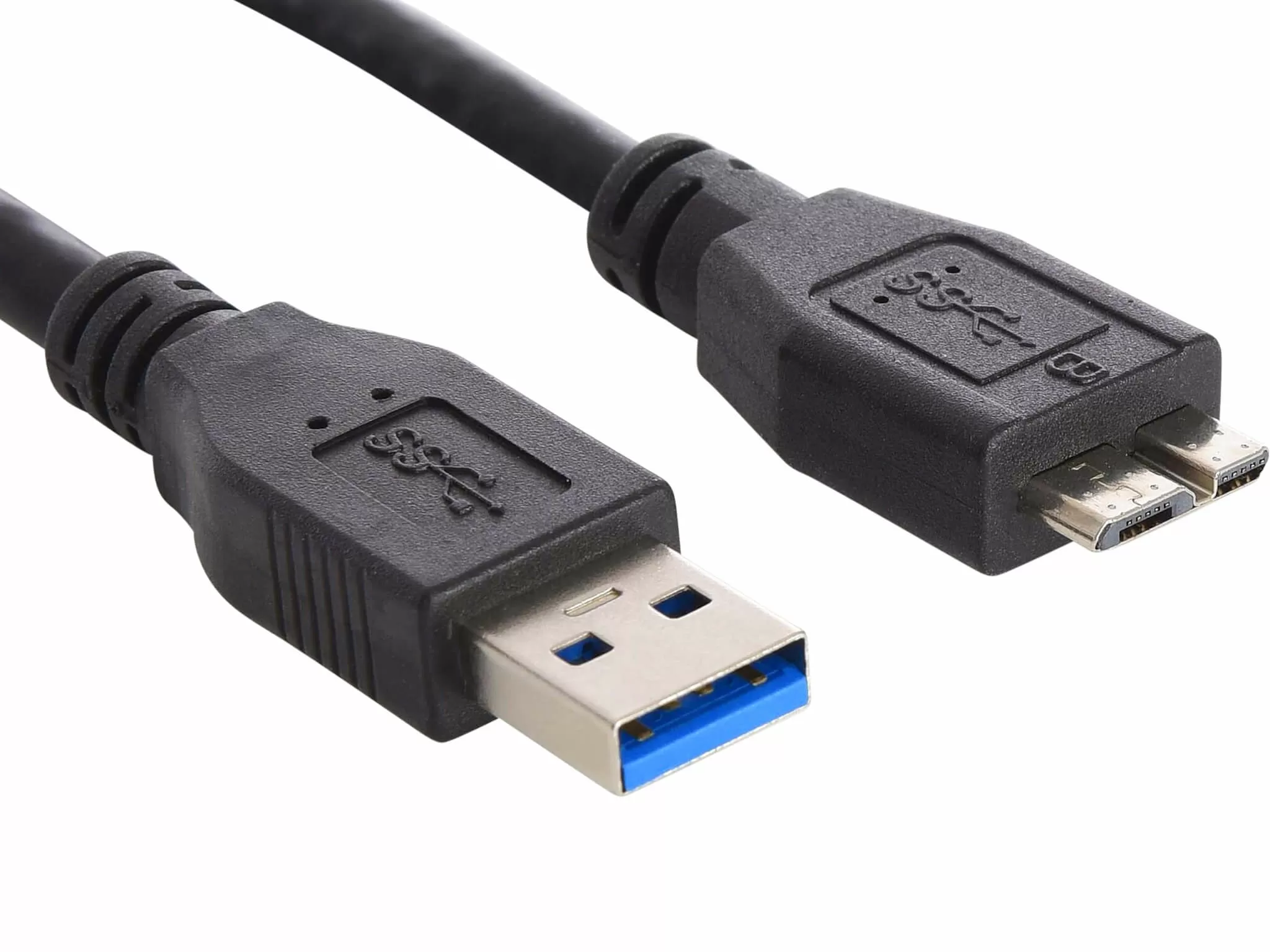The Universal Serial Bus standard has come a long way since its introduction in 1996. Backed by a consortium of companies led by Intel, Compaq and Microsoft, it offered some unheard-of features for its time, including the ability to connect peripherals without turning off the computer first and to draw power without a separate AC connection. The standard became popular with the arrival of version 1.1 in late 1998, allowing a maximum transfer rate of 12Mb/s, and as we can witness nowadays just about any device comes standard with 'Hi-Speed' USB 2.0 connectivity.
USB 3.0 is the next major revision of the ubiquitous interface. Dubbed SuperSpeed USB, this new version promises a tenfold leap forward in transfer speeds as well as improved capabilities, all while maintaining compatibility with USB 2.0 devices. In the following few paragraphs we've rounded out all the relevant information that you as a consumer should know about the next-generation USB standard.
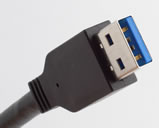
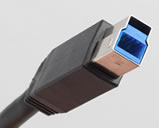
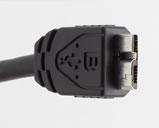
Some quick facts about USB 3.0
It's fast. The new standard breaks the 480Mb/s data transfer limit of USB 2.0 and takes it to a new theoretical maximum of 4.8Gb/s. Keep in mind that real-world performance can be considerably lower than that. USB 3.0 devices are not expected to reach their full potential at launch, but as the standard matures the USB-IF considers it reasonable to achieve a throughput of 3.2Gb/s, or just about enough to transfer a 27GB high definition movie in little over a minute rather than 15 or more with USB 2.0.
It's bi-directional. Unlike previous versions where data can only be piped in one direction at a time, USB 3.0 can read and write data simultaneously. This is achieved by adding two new lanes dedicated to transmit SuperSpeed data and another pair for receiving it, bringing the total number of connections from four on USB 2.0 (power, ground and two for sending/receiving non-SuperSpeed data) to nine counting the 3.0 ground contact.
Furthermore, the signaling method, while still host-directed, abandons device polling in favor of a new interrupt-driven protocol. This ensures that the USB host controller doesn't continually access a connected device in anticipation of a data transfer. Instead, USB 3.0 devices will send the host a signal to begin a data transfer.
It's more power efficient. The signaling method mentioned directly above also means that non-active or idle devices won't have their power drained by the host controller as it looks for active data traffic. Minimum device operating voltage is dropped from 4.4 V to 4 V. On the other hand, the USB-IF has upped the maximum bus power output from about 500 mA to 900 mA, which will enable power-hungrier devices to be bus-powered and USB hubs to support more peripherals. There's also the bonus that battery-powered devices should charge faster.
It's backwards compatible. Your existing USB 2.0 gear will work on version 3.0 ports and vice versa. You'll be able to maximize your bandwidth when using a USB 3.0 cable with USB 3.0 devices and ports, otherwise plugging a 3.0 device into a 2.0 port or a 2.0 device into 3.0 a port will get you standard USB 2.0 data rates.
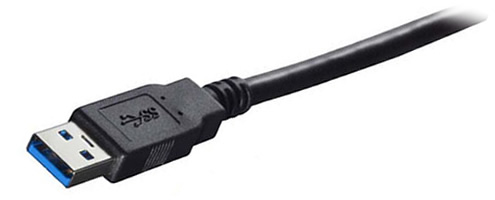
Since the new interface has been carefully planned from the start to peacefully co-exist with its predecessor, the connector itself remains mostly the same with the four USB 2.0 contacts in the exact same location as before. Extra pins for the new lanes dedicated to transmit and receive SuperSpeed data are located on the back and only come into contact when mated with a proper USB 3.0 port.
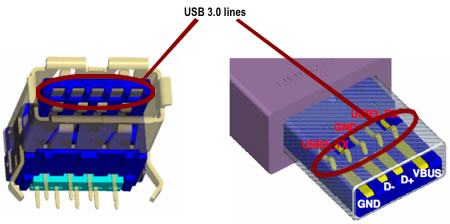
The receptacle is deeper as a result of this and USB 3.0 plugs will be longer than existing ones to reach the rear contacts. Also, due to the use of additional wires the new cable will be about as thick as an Ethernet cable.
After co-creating the USB 3.0 Promoter Group more than two years ago, and being criticized for allegedly blocking hardware partners from accessing needed information, Intel finally released the Extensible Host Controller Interface in August 2008. This meant that other members of the USB 3.0 Promoter Group would be able to start developing their own solutions once the finalized spec was made available.

Unfortunately Intel itself has no plans to support the technology on their own chipsets until at least 2011, holding back mainstream adoption, but NEC has a single-chip solution on the market right now known as the µPD720200. The chip measures 10 x 10mm, consumes up to 1W and is priced at $15 in bulk quantities.
Motherboards
Several board manufacturers have been relying on NEC's host controller for adding USB 3.0 functionality to their products. Asus has four variations of the P7P55D-E for Intel LGA 1156 (Lynnfield) processors, with prices ranging from $180 to $280, as well as the $300 P6X58D Premium for Intel LGA 1366 (Bloomfield) chips. Gigabyte also has four boards currently available as part of its P55A branded series priced between $135 and $250. Also the GA-X58A-UD7 for $350 and a pair based on AMD's 790X and 790FX chipset each going for $140 and $185, respectively.
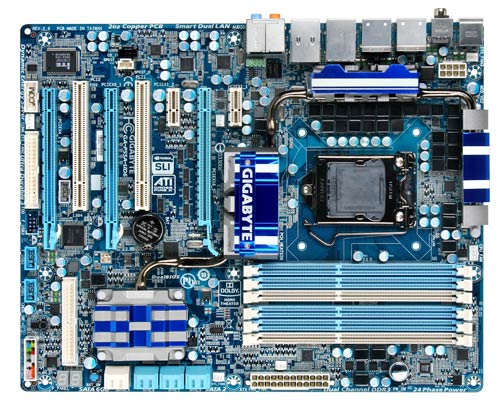
MSI is known to be working on at least one USB 3.0-equipped P55 motherboard, the P55-GD85, and another based on AMD's forthcoming 890FX chipset which is expected to arrive in the second quarter of next year.
Devices
It might take at least a couple more years until we see the market for USB 3.0 devices really explode. High-bandwidth devices will naturally be among the first to migrate to the new interface, but cost considerations, which are mainly driven by demand and volume, will restrict implementation to higher-end products for now.
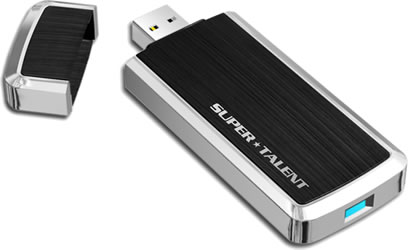
As of this writing we know of only a handful of devices offering support for USB 3.0 and most of them are prohibitively priced for the average user. Super Talent, for example, has unveiled a line of thumb drives that will debut with a 64GB model priced at $400. The promised 320MB/s transfer speeds sure are tempting, though.
Buffalo's newest external hard drive, the DriveStation HD-HXU3, steps into a slightly more reasonable price point with the 1TB model to start selling for $200 and the 2TB version for a whopping $400. The company has also announced a USB 3.0, 12X Blu-ray burner which should sell in Japan at a price equivalent to $451.

We expect several other devices to be announced in little over a week at the Consumer Electronics Show (CES) in Las Vegas, including an external solid-state drive from OCZ and a dual-drive RAID storage solution from LaCie, both based on a new Symwave storage controller. There will also be several USB 3.0-infused DisplayLink products at the show and a number of other products from all the usual suspects – we'll make sure to keep you up to date in our coverage when the information becomes available (and updating this guide as required).
Adapter cards
Adapter cards will likely play an important role in driving the installed base of USB 3.0 ports up. Instead of shelling out upwards of $150 for a new USB 3.0-equipped motherboard, users would need to spend roughly $30 to $50 for a 2-port PCI Express card compatible with their current hardware.
It should be noted that Windows 7 doesn't have native support or drivers for USB 3.0, but Microsoft intends to deliver them in an upcoming update to the operating system.
